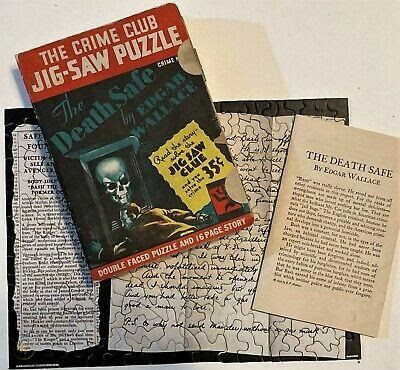In the United Kingdom, Collins took a unique approach to running The Crime Club compared to other book clubs. Unlike traditional clubs, membership was free, and books were distributed through booksellers and libraries. Instead of sending titles directly to readers each month, a newsletter/magazine was provided, featuring a list of forthcoming titles. This method can be seen as more of a marketing promotion than a gatekeeping distribution strategy.
Informed club members had the advantage of being able to promptly visit their local bookshops or libraries and be among the first to access their favorite authors' works. Agatha Christie, a renowned author, regularly released her books as Collins Crime Club editions, adding to the club's appeal.
The back cover blurb of The Murder at the Vicarage highlights that the reach of detective novels extends to a diverse audience, including cabinet ministers, business magnates, specialists from Harley Street, prominent judges, bishops, religious leaders, teachers, and individuals from all walks of life. Collins aimed for an educated readership, and their promotional materials reflected an open-minded approach to their broad range of readers. The Crime Club magazine specifically emphasized the high-quality writing of Murder on the Orient Express in its advertisement for the title, further showcasing their commitment to exceptional literature.
Spring 1934 Crime Club Magazine
Details About The Crime Club Newsletter Magazine
Content: The newsletter contained a variety of content related to crime fiction. Alongside the list of forthcoming titles, it featured articles, reviews, author interviews, and recommendations. The content aimed to provide readers with valuable insights into the world of crime writing and keep them informed about the latest releases.Author Spotlights: The newsletter often highlighted specific authors, allowing readers to delve into their background, writing style, and notable works. These author spotlights gave readers a deeper understanding of the writers behind their favorite crime novels and introduced them to new authors to explore.Exclusive Offers: The newsletter occasionally included exclusive offers, such as special editions, limited releases, or collector's items. These offers provided members with unique opportunities to enhance their crime fiction collection and access rare or highly sought-after editions.Reader Interaction: Collins Crime Club valued the opinions and feedback of its readers. The newsletter encouraged reader participation through features like letters to the editor, book recommendations from members, and reader polls. This interactive element fostered a sense of community among crime fiction enthusiasts.Extras and Extras Plus: In addition to the standard newsletter, Collins Crime Club introduced "Extras" and "Extras Plus" inserts. These inserts provided additional content, such as short stories, puzzles, quizzes, and other crime-related diversions. They added an extra layer of enjoyment and entertainment for readers.
The War Years
The Enclosed Postcard
The Collins Crime Club newsletter prominently featured a recurring footer message encouraging members to "Re-Enrol Now!" and providing instructions to fill out the enclosed postcard. This postcard served as a means for members to renew their membership and stay connected with the club.

































.jpg)

.jpg)
.jpg)
.jpg)
.jpg)

.jpg)







